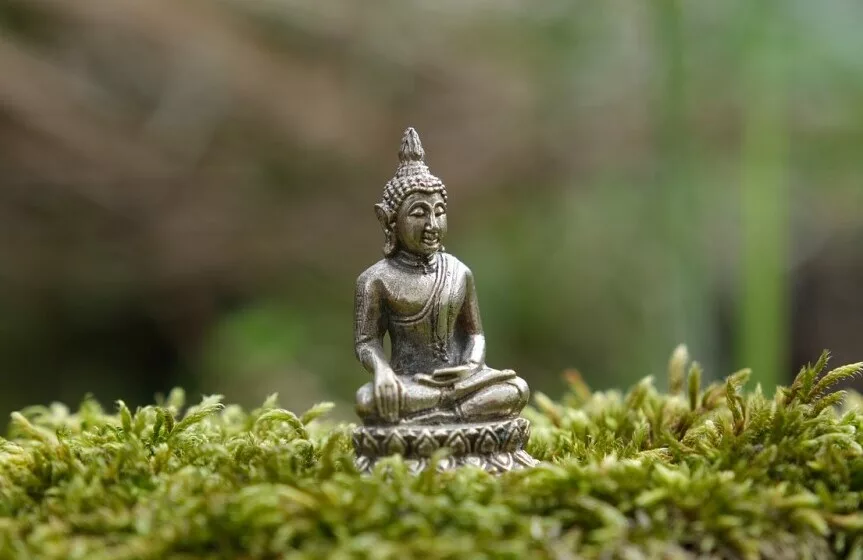
I often consider how the concept of mindfulness isn’t a modern invention; it’s a timeless thread woven into the fabric of human history. Ancient Eastern civilizations didn’t merely invent practices that resemble what I call mindfulness today; they refined and integrated these practices into the core of their lives. The roots of mindfulness in ancient civilizations can be traced back to the early Hindu texts, the Vedas. Composed thousands of years ago, these scriptures offer not only spiritual guidance but also practices that encourage the cultivation of a deep, introspective awareness. They teach the importance of observing one’s thoughts and actions with a watchful, non-judgmental eye.
As I explore the Buddhist approach to mindfulness, I find a rich tradition that places mindful awareness at the heart of its teachings. Siddhartha Gautama, the Buddha, presented meditation as a pathway to enlightenment, leading to calm and insight. It’s an integral part of the Noble Eightfold Path, a prescriptive guide to end suffering through ethical living, mental discipline, and wisdom.
Moving to the Taoist perspective, the Tao Te Ching introduces the principle of ‘wu wei,’ or non-action, which implies a state of natural alignment with the flow of life. Practicing ‘wu wei’ involves being mindful of the Tao, or the underlying essence of the universe, allowing for a harmonious balance between being and doing.
Incorporation of mindfulness in daily life was a common aspect across ancient Eastern societies. Whether through elaborate rituals or the simplicity of daily chores, people were encouraged to maintain a presence of mind. This focus allowed individuals to transcend the mundane and connect with a greater sense of purpose and balance.
Transitioning into the next section, it becomes apparent that while Eastern traditions may be seen as the cradle of mindfulness, the concept wasn’t confined to this part of the world. Ancient Western civilizations, with their distinct philosophies and lifestyles, also nurtured their own interpretations of mindful living.

The Western Gaze: Mindfulness in Greco-Roman Philosophies
In the ancient mindfulness practices, Western traditions bring their own threads. The Greek adage ‘Know thyself’ underscores a heritage steeped in introspection. Greco-Roman philosophy didn’t use the term ‘mindfulness,’ but their teachings resonate with similar principles.
The early Greek thinkers, the Pre-Socratics, set the scene. Their contemplations on existence and self-awareness laid the groundwork for future interpretations of mindfulness. They questioned life and looked inward for wisdom—echoing mindfulness’s theme of turning one’s gaze inward.
Stoicism, a school founded in Athens, incorporated mindfulness in its fabric. Stoics like Seneca and Marcus Aurelius practiced awareness of the present moment to cultivate virtue and tranquility. Their writings suggest that for them, a mindful existence was the path to a life well-lived.
In contrast, Epicureanism proposed mindfulness in the pursuit of pleasure and avoidance of pain. This isn’t hedonism, but a call for a measured life where one is acutely aware of the sources of genuine happiness—again, a mindful appraisal of life’s offerings.
The Greeks didn’t limit introspection to philosophy. Mythology and public life brimmed with concepts encouraging self-knowledge. Practices like the Delphic Oracle’s consultations were, arguably, exercises in collective mindfulness, prompting reflection on personal and civic dilemmas.
Turning to Rome, we see a melding of their own and Greek ideas. Romans like Cicero and Epictetus furthered the notion of practical mindfulness. They argued for a focused awareness in daily activities, thus embedding mindfulness in the art of living practically and ethically.
The thread from Greco-Roman mindfulness weaves into the vibrant, often overlooked, tapestry of indigenous and shamanic traditions. In these cultures, mindfulness was not only a practice but a way of life deeply intertwined with nature and spirituality.

Spiritual Rhythms: Mindfulness in Indigenous and Shamanic Traditions
Imagine stepping into a world where every element of nature holds profound meaning and offers a pathway to deeper understanding. This encapsulates how indigenous cultures across the globe regarded mindfulness, weaving it seamlessly into their spiritual fabric.
Shamanic traditions, which can be found from the Siberian tundra to the Amazon rainforest, heavily relied on achieving mindful states. These were not only crucial for individuals’ inner harmony but also essential for their healing rituals. Shamans would enter trances, using mindfulness as a tool to bridge the physical and spiritual realms, seeking insights and solutions.
What seems like a simple concept was actually foundational; for indigenous peoples, mindfulness was the key to appreciating their intimate relationship with the earth and skies. Contemplation on the rhythms of nature led to a profound sense of interconnectedness that instructed community practices and personal conduct.
The onset of colonization dealt a significant blow to these practices. Many mindful traditions were forcibly suppressed, and others were lost amidst the upheaval of cultural disintegration. Yet, the resilience of these traditions manifests in their stubborn survival and gradual revival in today’s cultural lexicon.
There is now a growing appreciation for the value of indigenous mindfulness practices. Their revival is an attempt to not only preserve cultural heritage but also to offer alternative perspectives on well-being and environmental stewardship in the modern era.
As we ponder the revival of these practices, we begin to see the outlines of a wider tapestry. This is a tapestry where the threads of ancient wisdom not only endure but have the potential to enrich our collective pursuit of mindfulness today.
The Global Tapestry: Cross-Cultural Convergence and Legacy
When we survey history, it’s clear that mindfulness has woven its way through the fabric of various ancient civilizations, crossing borders and spanning continents. The exchanges brought by trade and travel led to a fascinating diffusion of ideas, including those centered on mindfulness.
While ancient societies practiced mindfulness in diverse ways, shaped by their unique philosophies and environments, there are striking parallels. These similarities tell a story of humanity’s shared quest for meaning and inner peace, a testament to the universal nature of mindfulness.
In the present, we continue to experience the impact of ancient mindfulness. Despite technological advancements and a fast-paced modern world, these time honored practices still offer solace and grounding. The convergence of ancient wisdom with today’s challenges provides us with unique pathways to balance and wellbeing.
By reflecting on how our ancestors integrated mindfulness into their lives, we can gain insights into enhancing our own. It’s possible to adapt traditional practices to suit our contemporary needs, tapping into a rich heritage to foster resilience and mindfulness in our routine.
As we look ahead, the potential for mindfulness in our interconnected society is vast. With greater awareness and appreciation for its ancient roots, we may continue evolving the practice, enriching lives across the globe for generations to come.
Thank you for your time and please share your opinions in the comment section below.
Cheers!
Click here and enjoy a free membership in wealthy affiliate



Wow- this is great information on the history of mindfulness! I do think this is a very important practice – especially in our hurried society today. I really like what you said regarding the ability to ” transcend the mundane and connect with a greater sense of purpose and balance”. I know how precious life is and even tasks we see as boring should be done with a calmness and gratitude.
Hi this was a very thoughtful provoking article. I found it very interesting about how you said that mindfulness is not a new concept for humanity. That it’s been around for thousands of years. It’s becoming more mainstream today but more people could definitely benefit from it. Which is why they should visit your website.